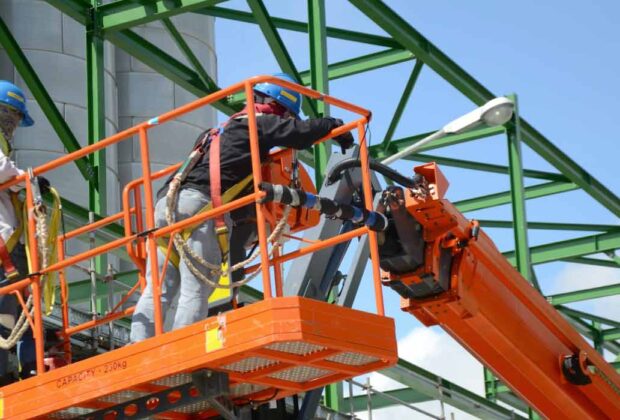Written by Jessica Tucker, HSE Specialist
This bill proposes numerous changes to the existing Alberta Occupational Health & Safety (OHS) Act. The purpose of the OHS Act is to set the minimum health and safety standards in which employers and workers must comply. Bill 30: An Act to Protect the Health and Well-being of Working Albertans will modernize Alberta’s Health & Safety system to reflect present-day workplaces and conditions.
The last time Alberta’s OHS Act was reviewed and updated was in 1976, so organizations need to be ready to amend their current policies and procedures to comply with the new, proposed legislation. Along with updating a manual, organizations must ensure all employed individuals are made aware of the amendments and understand the responsibilities of their roles.
Let’s talk about Due Diligence. In terms of occupational health and safety, due diligence means that employers should take all reasonable precautions, under the distinct circumstances, to prevent incidents in the workplace. If a company exercises due diligence and operates with a functional, effective Occupational Health & Safety Management System, it would be beneficial for management and supervisory personnel to become familiar with the amendments Bill 30 will soon enforce.
Some of the proposed key changes to Occupational Health & Safety include:
- Introduction to obligations to protect workers from workplace harassment and violence.
Employers and supervisors obligated to ensure no worker is subjected to or participate in harassment or violence. Review and update existing Workplace Harassment & Violence Policy within your Safety Management. Ensure all workers are educated on any changes and provide training if they have not already.
Employees obligated to refrain from participating or causing harassment or violence.
- Requiring the establishment of Joint Health & Safety Committees (JHSC) or designation of a Health & Safety Representative
- Large Employers who employ 20 or more employees must have a JHSC for work lasting longer than 90 days.
- If 2 or more employers are working on the same site and the total number of workers is 20 or more, the Prime Contractor (Prime) will coordinate a committee. In the rare chance there is no Prime, all employers will coordinate a committee for that shared work site.
- Committees will consist of at least 4 people, whom at least half can’t be management.
- Small Employers who employ 5- 19 employees must appoint an H&S Representative for work lasting longer than 90 days. The person will be chosen by the Union or be selected by the workers he/she will represent.
- Again, if 2 or more employers are working on the same site and the total number of workers is 5- 19, the Prime will appoint an H&S Rep. In the rare chance there is no Prime, all employers will coordinate an H&S Rep for that shared work site.
Employers need to determine which category (Large or Small) they fall into and implement accordingly. As well, review and update current policies surrounding JHSC/Safety Representative requirements and responsibilities.
Employees need to understand JHSC/ Safety Representatives’ duties in the workplace.
- Changing the workers’ right to refuse unsafe work. The proposed legislation states that the worker will be entitled to continue getting paid while the employer investigates, or the employer may reassign the worker to different work.
Employers need to understand the implications of not complying with the Occupational Health & Safety Act and the importance of Due Diligence.
Employees need to understand their rights and what will happen if they choose to exercise them.
- Changing reporting requirements. Employers will be required to now report any injury or illness that results in a worker being admitted to the hospital. Currently, employers only have to report if a worker was admitted for 2 days or more. Employers will also be required to report high potential near misses (an incident that has the potential of causing serious injury). Currently, employers only have to investigate near misses, not report them.
Employers need to review and update existing Reporting Policies and ensure all applicable workers are educated on the changes.
Employees need to continue reporting all near misses and incidents to their supervisors.
- Broaden courts’ ability to come up with creative sentencing requirements. The court may direct an offender to pay for training, research, scholarships, or any other purpose that helps achieve the goal of a healthy and safe work site.
- Requiring review of the OHS Act every 5 years.
Employers need to keep up-to-date on changes to legislation and update Occupational Health & Safety Management Systems as needed.
Here at Danatec Educational Services, we are in the business of getting workers home safely. Bill 30 will introduce various changes that we believe will help protect Albertan Workers on the job and provide them with the same opportunities as workers in the rest of Canada. Organizations that take the time to become educated, and seek out the requirements, should be able to adapt to the changes relatively easy.
The proposed OHS changes will become effective June 1, 2018. For any questions or inquiries, please call us at 1-800-465-3366.
Check out Danatec’s Bill 30 pages:
Danatec’s Bill 30 Reference Page
Danatec’s Joint Health & Safety Committee Online Training Course
Read Bill 30: http://www.assembly.ab.ca/ISYS/LADDAR_files/docs/bills/bill/legislature_29/session_2/20160308_bill-030.pdf
Overview of OHS and WCB changes: https://www.alberta.ca/ohs-changes.aspx




Comments are closed.